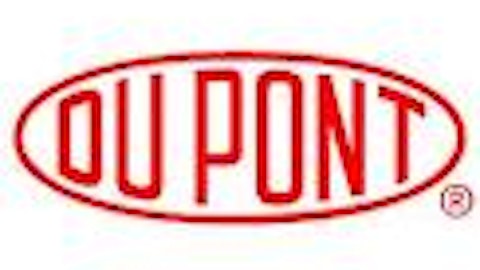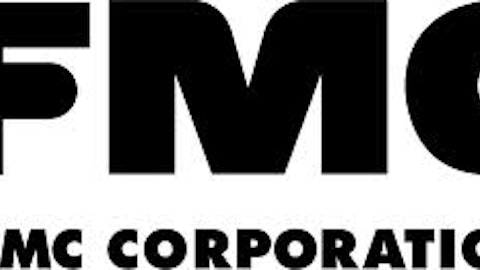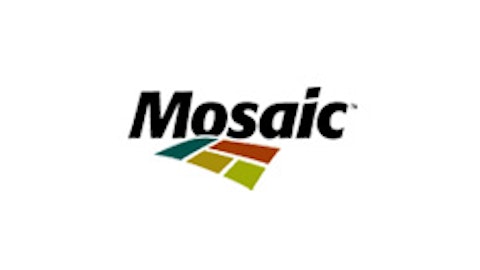Once an obscure and thinly used metal, lithium has become more of a household name in the commodities world, thanks to booming demand in electronics and auto applications. Moreover, the majority of global lithium supply is controlled by a handful of major producers. Much like it has for oil and OPEC, this oligopolistic-like supply structure for lithium, could bode favorably for sustained tight supplies and high lithium prices going forward, making a potentially lucrative investment case for the aforementioned lithium miners.

Surging Demand
The US Geological Survey (USGS) estimates that global lithium demand grew by 5.6% annualized between 2000 and 2011. I believe the rapid growth in lithium demand will likely continue if not accelerate over the next decade given the proliferation of lithium ion batteries in both electronic and automotive applications.
The big driver for lithium demand growth going forward will come from batteries, in my opinion. Lithium-ion batteries offer the attractive combination of light weight and superior capacity to hold electric charge. As a result, demand for lithium-ion batteries in portable electronics (such as cell phones and laptops) as well as in hybrid vehicles (such as the Toyota Prius) has surged during the past decade.
While increased global production of cell phones and laptops will certainly help stoke continued lithium demand growth, I believe the big game changer would be the development and proliferation of plug-in hybrids and electric vehicles such as the Chevrolet Volt or the Nissan Leaf. Rockwood estimates in its May 2013 presentation that a typical cell phone contains 0.1 ounce of lithium, but that plug-in hybrids and fully electric vehicles (with their need to run longer on their lithium-ion batteries) contain between 20 to 50 pounds of lithium per vehicle.
With fuel efficiency on the top of auto consumers’ minds, the push towards hybrid, plug-in hybrid and electric vehicles seem inevitable. Combine this with the continued growth of the consumer electronic industry, and the demand outlook for lithium looks rosy. Rockwood estimates that in its conservative scenario for plug-in and electric vehicle production growth, total global lithium demand will still be able to roughly double from 2010 levels by 2015.
Oligopolistic Supply
While the bright outlook for lithium demand growth should hearten investors in this niche metal, the supply outlook only makes the investment case more compelling. Global lithium production is dominated by only a handful of producers, including Rockwood Holdings, Inc. (NYSE:ROC), Sociedad Quimica y Minera (ADR) (NYSE:SQM), FMC Corp (NYSE:FMC), and Australian lithium miner Talison Lithium, which is scheduled to be acquired by Chinese firm Chengdu Tianqi after spurning a takeover offer from Rockwood Holdings, Inc. (NYSE:ROC).
According to Sociedad Quimica y Minera (ADR) (NYSE:SQM)’s June 2013 presentation, SQM produced roughly 35% of global lithium supply in 2012, while Talison produced 22%, FMC Corp (NYSE:FMC) produced 11%, and Rockwood Holdings, Inc. (NYSE:ROC) produced a significant chunk of the “other” supplies from Chile (which represented 19% of global production). This market share data indicates that the top four lithium producers control well over three fourths of the global lithium supplies, indicating a highly concentrated industry structure.
The oligopolistic supply situation for lithium brings to mind how OPEC interacts with oil prices. With OPEC controlling a healthy chunk of global oil supplies, crude production is usually held at rational levels, which provides prices support. While the major lithium producers don’t engage in overt cartel-like activity (unlike OPEC), the concentration of supply in a handful of major producers naturally helps mitigate the risk of a lithium oversupply. After all, a big production increase by any one of the major lithium producers would have a material impact on global lithium supply and prices, which would directly hurt profitability for any lithium miner that decided to increase production.
Investment Options
The largest lithium producer is Sociedad Quimica y Minera (ADR) (NYSE:SQM), which produced 35% of global lithium supplies in 2012. While it is a big player in the lithium market, SQM generates the majority of its earnings from fertilizers such as potash, as well as from iodine. Sociedad Quimica y Minera (ADR) (NYSE:SQM) produces its lithium (and other specialty chemicals) from the unique salar brines of Chile. This is one of the lowest-cost supplies of lithium in the world, thanks to the concentrated portions of lithium already present in the brine, as well as intense solar radiation in the region.
Fellow lithium miner Rockwood Holdings, Inc. (NYSE:ROC) also benefits from the low-cost Chilean brine. The company mines its lithium in the same country as Sociedad Quimica y Minera (ADR) (NYSE:SQM) through its subsidiary Chemetall, albeit at a smaller scale than SQM. Rockwood Holdings, Inc. (NYSE:ROC) is also probably the purest play on lithium among the big three, as the company generated over 13% of its 2012 revenue from lithium. Furthermore, Rockwood Holdings, Inc. (NYSE:ROC) reached agreements to sell its ceramics as well as its clay-based additives business units in 2013, which should make lithium an even more important part of its continuing operations.
FMC Corp (NYSE:FMC) sources the majority of its lithium from salar brines in Argentina, which share a similar chemical composition as the Chilean brine, and thereby represent a low-cost supply of lithium. However, FMC Corp (NYSE:FMC) also produces some of its lithium from higher-cost mines in the U.S., thereby partially eroding its low-cost advantage gained from its Argentine operations. Also, FMC Corp (NYSE:FMC)’s lithium business is only a small part of the company’s overall business (which ranges from insecticides to pharmaceuticals), as the firm only generated 6.2% of its 2012 sales from lithium.
Valuation and Concluding Thoughts
In terms of valuation, based on market closing price on August 2, 2013, Sociedad Quimica y Minera (ADR) (NYSE:SQM) was trading for 11.7 times 2012 earnings, Rockwood was trading for 14.2 times 2012 earnings, and FMC Corp (NYSE:FMC) was trading for 22.4 times 2012 earnings.
While SQM might seem to be the biggest bargain among the three based on price to earnings ratios, the company may also prove to be a risky investment given that SQM’s single largest profit source is potash fertilizer, which faces an uncertain and potentially negative outlook after major Russian potash supplier Uralkali announced that it would be leaving one of the world’s two major potash cartels.
In my view, Rockwood is a better way to bet on rising lithium demand and tight lithium supplies, given its purer exposure to lithium than both SQM and FMC, as well as its much more reasonable valuation relative to FMC.
John Park has no position in any stocks mentioned. The Motley Fool recommends Sociedad Quimica (NYSE:SQM) y Minera (ADR). The Motley Fool owns shares of Rockwood Holdings. John is a member of The Motley Fool Blog Network — entries represent the personal opinion of the blogger and are not formally edited.
The article Investing in the OPECs of Lithium originally appeared on Fool.com is written by John Park.
Copyright © 1995 – 2013 The Motley Fool, LLC. All rights reserved. The Motley Fool has a disclosure policy.




